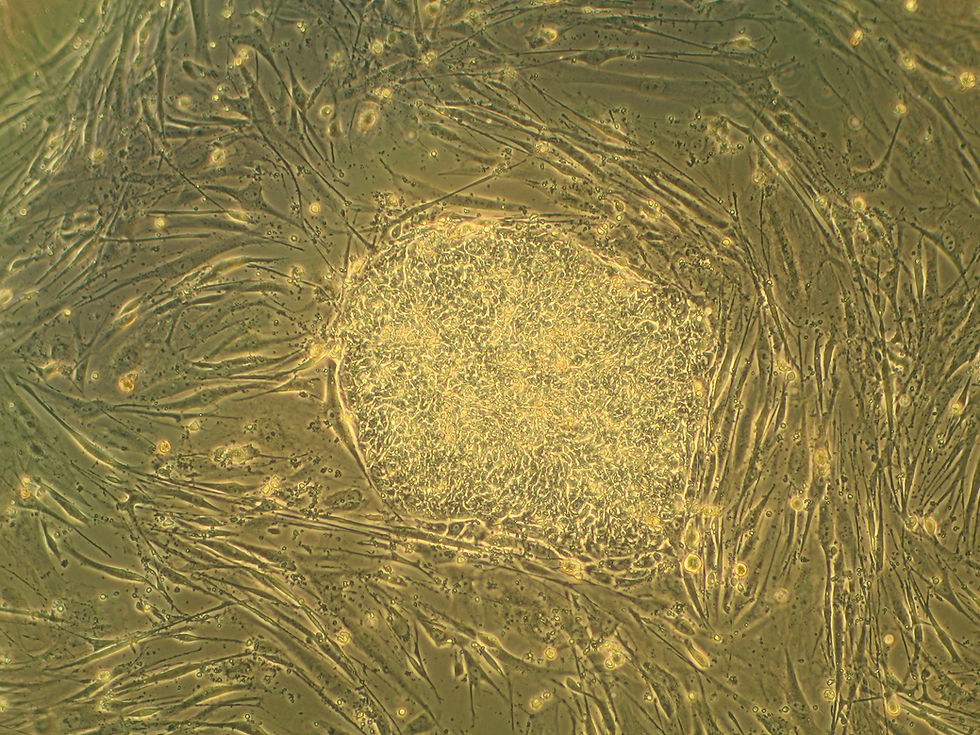Monoclonal Antibodies Bring Alzheimer's Disease Closer to its Waterloo
- Sidharth Raghavan

- Jul 2, 2021
- 3 min read
I. From Mouse to Human
Alzheimer’s disease, cancer, and auto-immune diseases, along with many others, plague millions of people around the world. In recent years, scientists have begun to advance towards finding a permanent cure for Alzheimer’s disease, thanks to the advent of proteins called monoclonal antibodies. The story of these vital molecules takes us to the 1970s - the laboratory of future Nobel Prize winners George Kohler and Caesar Milstein.

Kohler and Milstein developed the Hybridoma technique - a method of producing antibodies that are specific to a needed antigen. Antibodies are attack proteins in our immune system that hunt and destroy specific foreign invaders such as viruses by attaching to a protein (antigen) specific to the alien. By fusing the antibody producing B cells from immunized mice with their respective tumor cells, specifically Myeloma cells, Kohler and Milstein created a novel hybrid engine that could assemble an unlimited amount of any antibody. While this discovery was tremendous for the field of immunology, it wasn’t until a decade later that scientists actually applied the technique to human cells.
Unfortunately, the Hybridoma technique as built by Kohler and Milstein was far from practical for humans. Using mouse antibodies in the human body would cause major immunological problems since the proteins would be recognized as foreign. In 1986, Sir Greg Winter, a biochemist at the University of Cambridge, employed the prior techniques of creating antibodies with his deep knowledge of the protein structure to add antibodies to our arsenal of modern treatments.
Winter was saddened by a woman who was diagnosed with a lymphoma - she was not predicted to live much longer. When trying to create a human antibody treatment for her, he realized that all antibodies have the same base structure; however, each antibody has a different loop structure on its exterior. By taking the antibody built by the mouse and transplanting the loop of a human antibody onto it, Greg Winter effectively “humanized” monoclonal antibodies. What’s more, the treatment, called Campath-1H, was found to be successful in the woman who was his inspiration. Sir Greg Winter’s discovery has since revolutionized the antibody drug market and his innovations are now involved in a whopping 65% of the marketed antibody drugs available.
II. Monoclonal Antibodies Bring New Hope to Alzheimer's Disease
Alzheimer’s disease is a neurodegenerative disease that causes dementia, affecting more than 5.8 million people each year in the United States. Despite many years of research, scientists have yet to fully understand the disease and develop any permanent cures. This year, monoclonal antibody treatments have brought Alzheimer’s disease one large step closer to meeting its waterloo.
In patients with Alzheimer’s disease, an abnormal amount of the protein beta amyloid forms in clusters and plaques between neurons, acting as an obstacle to cellular signaling. To combat the destruction afflicted on the brain by beta amyloid proteins, scientists have built “anti-amyloid” antibodies that block the accumulation of plaque in the brain. On July 1st, 2021 Eli Lilly's donanemab, a monoclonal antibody treatment, was named a breakthrough therapy for treating Alzheimer’s disease by the Food and Drug Administration. Donanemab works by recognizing the detrimental amyloid plaques present in the brain and attaching to them, signaling to the immune system that the plaque is a threat. Then, the immune system can send fighter cells to extinguish the hostile plaques.

III. The Battle is not Over
While donanemab was able to successfully increase the cognitive capabilities of those with Alzheimer’s disease, there is still more work to be done to make treatments more effective. The second clinical trial for donanemab will occur in the coming months to ensure the safety and effectiveness of the drug. Thankfully, donanemab is one of the many monoclonal antibody treatments in development so there is much hope that scientists can forge even stronger antibody treatments in the near future.
There are many challenges that scientists must overcome when perfecting monoclonal antibody treatments for Alzheimer’s disease. At the moment, monoclonal antibody treatments would have to be given regularly to patients throughout their life, ensuring that they always have the requisite supply of antibodies to deactivate the beta amyloid plaques. As you might imagine, this would rack up quite the medical bill. Scientists must find a way to make antibody treatments more affordable, yet still effective.
As scientists parse through the confusing results of monoclonal antibody clinical trials, it’s clear that we’ve only just begun to scratch the surface of how Alzheimer’s disease works. Some data suggest that different antibody treatments might bind to different shapes of the beta amyloid plaques. Perhaps scientists could develop an “antibody cocktail” that would be even more effective in destroying the amyloid plaques. As clinical trials progress, I’m optimistic that our treatments for and understanding of Alzheimer’s disease will continue to grow.




👍